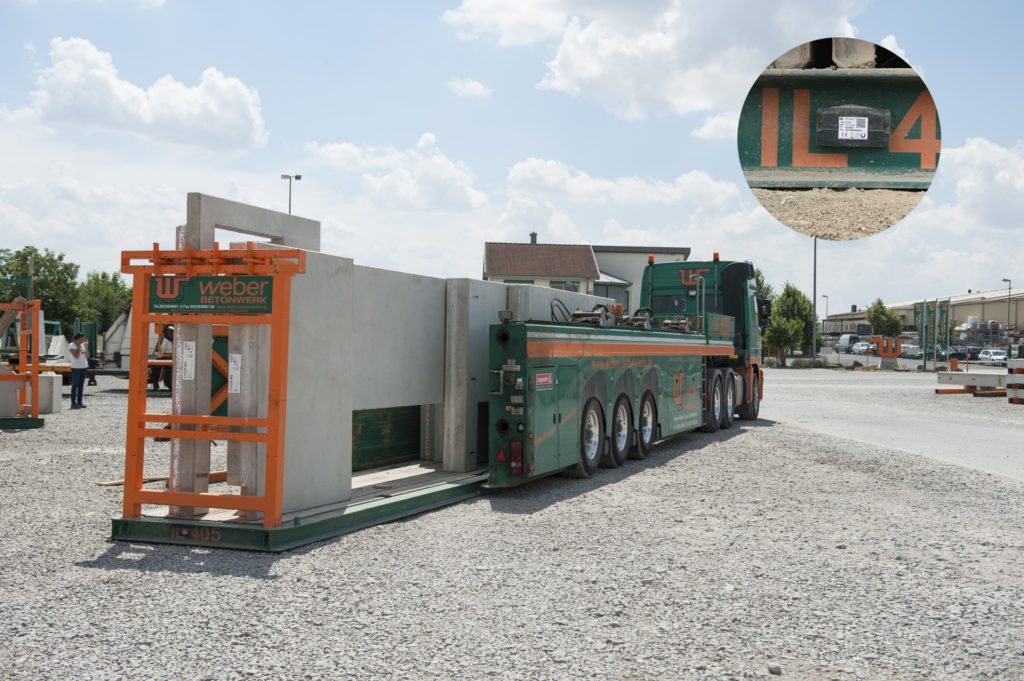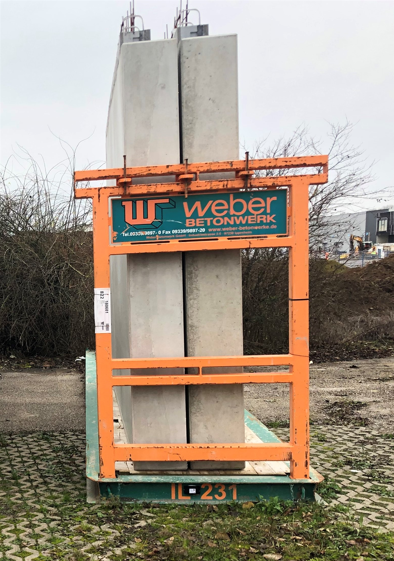How we have already been able to help our clients
Hundreds of racks are tracked day and night to accurately detect transports.

Challenge
On large construction sites, customers (site managers) need precise information about the expected delivery time of ordered precast concrete elements. Late delivery of precast elements causes construction delays, jeopardises planning, leads to additional costs and dissatisfied customers.
- Conventional GPS sensor technology with mobile devices is expensive to purchase and the management of SIM cards and contracts is correspondingly complex.
- In addition, maintenance cycles are short due to low battery life, which can affect process efficiency.
- In addition, maintenance cycles are short due to low battery life, which can affect process efficiency.
Solution
Cost-effective localisation solution, adapted to the harsh environment of construction sites, to track load carriers in real time.
The solution determines the exact geo-position of load carriers and indicates the status of deliveries of Weber Beton precast elements and their expected arrival.
Benefit
Weber Betonwerke have achieved transparency on current deliveries.
The data insights enable the optimisation of operational efficiency:
- Secured stock, prevention of theft
- Increased turnover rate and higher capacity utilisation
- Resource savings through optimised delivery routes
- Reduction of manual processes (search times)
- Customer satisfaction through more information!


“For the Weber Betonwerke project, a Sigfox 0G solution from h2n was ultimately chosen because these trackers are industrially robust, guarantee particularly long battery life of up to 7 years and provide extremely accurate geodata thanks to GPS sensor integration – even away from urban settlement structures that have already been developed.”

